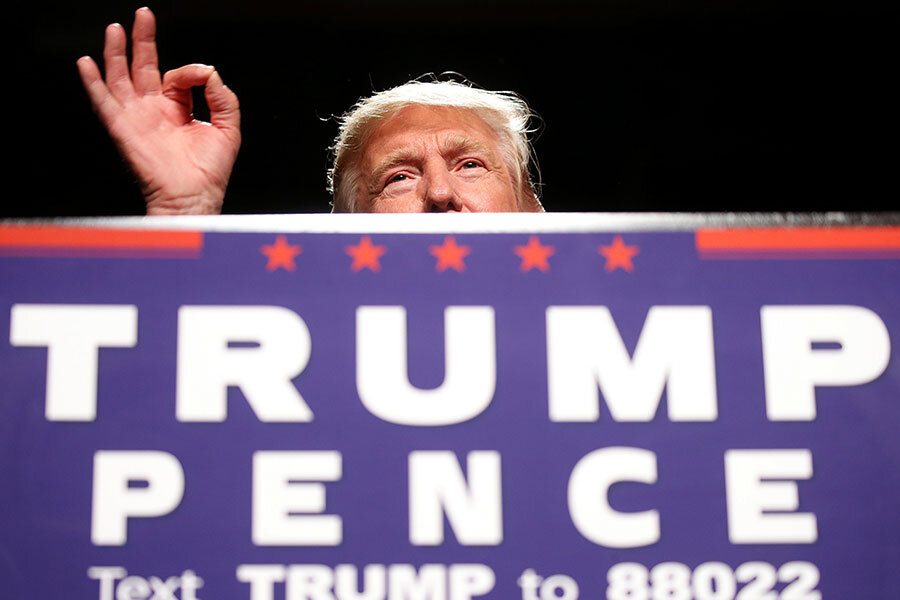Trump’s 1990s tax returns: 'The Art of the Dodge?'
Loading...
On Monday, The New York Times dissected the $916 million of Net Operating Losses (NOLs) that Donald Trump claimed on his 1995 tax return, which The Times disclosed last month. Basically, Trump borrowed, and lost, a large amount of money in a series of failed ventures, mainly casinos. While the losses were mostly borne by his creditors, Trump took tax deductions for large amounts of interest, depreciation, and operating expenses. As a result, he was potentially able to avoid paying federal income taxes for nearly two decades.
We have no evidence that Trump broke any laws but, at a minimum, he seems to have aggressively stretched the law to avoid reporting taxable income of hundreds of millions of dollars from restructured loans. Had he reported that income, he would have lost about half of his $916 million of NOLs.
Normally, taxpayers do not recognize income when they borrow funds. The logic is that while they increase their assets, their obligation to repay the debt increases their liabilities by the same amount. However, if taxpayers later are relieved of all or part of their obligation to repay, they generally must report the difference as income.
In the early 1990s, Trump was in deep financial trouble and pressed his lenders to restructure his debt. But, based on documents filed in bankruptcy court, Trump did not report the income from restructuring his large public borrowings. He excluded the income despite reservations expressed by his own lawyers. We do not know whether the IRS ever challenged his position.
At the time Trump renegotiated his loans, the law allowed some exceptions to reporting income from forgiveness of debt. One, since repealed, permitted a corporation to substitute its equity for outstanding debt on the grounds that the corporation was simply changing the form of its obligation from stock to bonds (the “stock-for-debt-exception”).
Under the old law, some advisers sought to extend the corporate exception, by analogy, to a partnership that exchanged its equity for its outstanding debt (a “partnership-interest-for-debt” exception). But Trump took this argument even further: He claimed that as a partner, he didn’t have to report debt forgiveness as income even if his partnership exchanged new partnership interests for the debt of a separate corporation. In effect, Trump stretched the partnership-interest-for-debt exception, which was tenuous to begin with, to a partnership-interest for-someone-else’s-debt.
Consider the Plaza casino, one of Trump’s three bankrupted Atlantic City venues. The casino was owned and operated by Trump Plaza Associates (also known as “Plaza Partnership”), in which Trump was the 99.99% partner. The casino was financed in 1986 by a $250 million bond offering to the public by a separate corporation, Trump Plaza Funding, Inc. (“Plaza Funding”), which also was owned by Trump. The bonds were issued by Plaza Funding, apparently to help the public investors avoid regulation as “casino operators”under New Jersey gaming laws, but the bonds were guaranteed by Plaza Partnership.
In 1992, Plaza Funding (and Plaza Partnership) declared bankruptcy and restructured their debt. The public holders of the original $250 million in bonds received $225 million of new debt, with a lowered interest rate and extended maturity. The investors also got a preferred interest in Plaza Partnership.
Normally, a borrower such as Trump would recognize $25 million of income reflecting the difference between the initial $250 million in debt and the new $225 million. (A borrower might recognize more if the new bonds actually traded at a price lower than their face amount because, for example, a lower interest rate, or less if the partnership interest had value—which typically would be small for a partnership in bankruptcy.)
However, we know from the restructuring documents that the Plaza Partnership planned to “take the position” that its partner, Trump, would not recognize any income from the exchange of new bonds and a partnership interest for the old bonds, regardless of the worth of the partnership interest. This application of the “partnership-interest-for-debt” exception recast the old bonds as debt of Plaza Partnership, even though these bonds had been issued and, apparently, treated by Plaza Funding as its debt.
Trump’s other casinos, Taj Mahal and Castle, arranged similar restructurings, but with much more potential income at stake. Lenders refinanced $860 million of debt for the Taj Mahal and $336 million for Castle. In each case, the bondholders received new paper worth about a third less than the outstanding debt (this new paper was traded on the American Stock Exchange, so we can value it more easily). Trump’s income from the combined discharge of these two debts would have been another $400-450 million or so.
Unlike the Plaza restructuring, Trump’s lawyers wrote opinions for the Taj Mahal and Castle restructurings. They argued Trump could exclude the income by treating the old bonds as partnership debt although, prior to the restructuring, the bonds apparently had been treated as funding corporation’s debt. However, the lawyers explicitly refused to give a tax opinion that this position was more-likely-than-not to prevail if the IRS challenged it. That is, Trump’s own lawyers estimated his prospects of success at 50/50, at best.
If the IRS disputed Trump’s exclusion of income from just these three bond restructurings, it could have eliminated about half of his $916 million of NOLs. And Trump might have begun to pay taxes sooner. We may never know, of course, unless Trump discloses his tax returns, which at this point, appears unlikely.
This story originally appeared on TaxVox.







